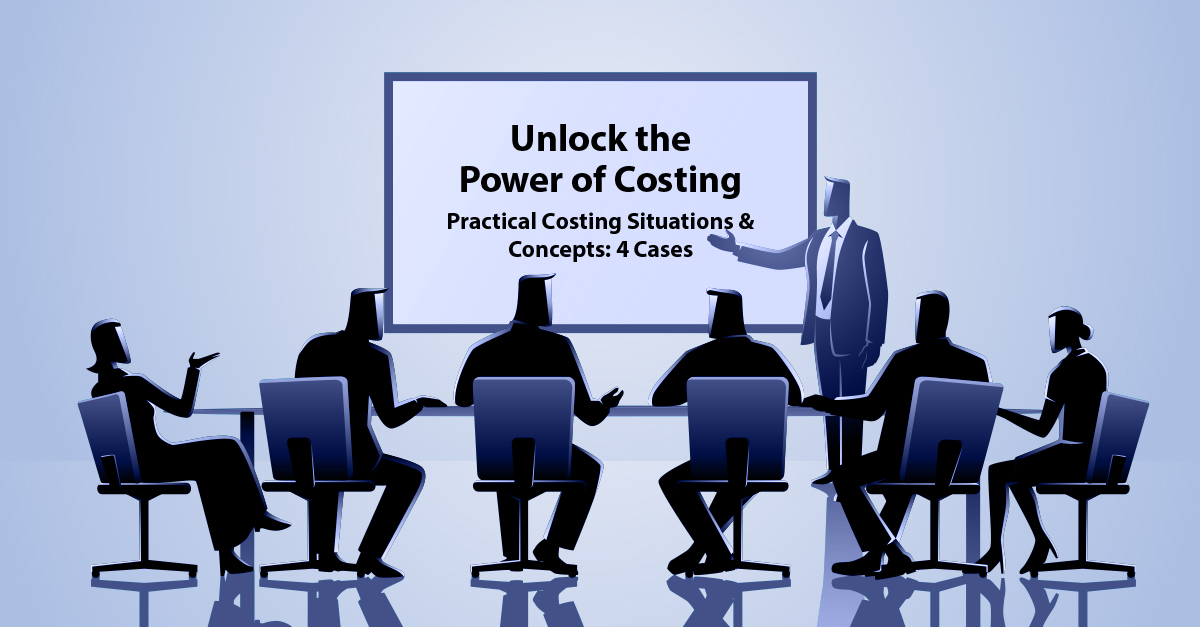You are ready to begin building your cost model, or perhaps in the process of selecting/upgrading your ERP software and want to plan through how it will support your cost model. As we have discussed, at the core of a cost model are the business processes that make up your cost, plus any materials used of course. Here we discuss 4 concepts to guide your thinking. Especially when considering the platform (e.g., ERP or Excel) where you will build your Cost Model, you must determine if your ERP system will accommodate some of these cases. A skilled Excel modeler can accommodate just about anything!
By and large these concepts apply to manufacturing situations and are most easily understood in that context.
Discrete and Batch Processes
In a discrete manufacturing process product, finished parts are distinct and identifiable. What this means is even though you may make 10 (or 10,000) at a time, they are made individually. The time or effort or resources (costs) to make discrete products are driven by the countable number made. Examples are common household products like a toaster or a PC. Cost models for discrete processes are the easiest to model as most costs follow the formula of Time/each or QTY/each and cost can be calculated multiplying by the cost rate ($/time, or $/qty) to get cost.
Batch process products are made a batch at a time. A common example is a chemical reactor process. Materials are placed in the reactor, heat applied and some fixed time period later (say an hour) a batch of reacted chemicals is ready. The batch size can be 100, 200 or 2000 gallons up to the size of the reactor tank, but it takes an hour to process regardless. Batch costing requires assumptions about the average batch size to be manufactured at any one time. Products with sequential batch process steps can be tricky as efficient operation requires operation not always at the max of all “tanks” but in fitted sets. Well designed and engineered processes will typically be set so that a BIG tank feeds exactly X smaller tanks. In real life this is often not the case as recipes change faster than do hard fixed assets.
Continuous Processes
A continuous process is best thought of as a batch process in interconnected pipes. This is quite different than a highly automated discrete process that seems to flow but each unit is still an individual. An example of continuous processes are oil refineries. Here flow rates per hour and costs per hour and varying yield rates are common elements of costing. Other complexities typically arise in continuous processes as a common feedstock branches into different products undergoing different processes along the way. Other common issues are dealing with and assigning a negative cost to by-products that are generated and (hopefully sold off) to reduce cost. Other challenges often involve items like catalysts which are used in the process, and can be regenerated for a lower cost than buying new and recycled back into the process. Manpower in continuous processes is often quite low and heavily weighted towards fixed costs.
Man vs Machine Processes
Many manufactured products require both manpower and machinery to perform. Sometimes the relationship between man hours and machine hours is 1:1. Sometimes it is less when a single man can tend multiple machines. Sometimes a crew runs a machine. Calculation of cost rates in man/machine environments is usually best attacked with a developing a man cost rate and a machine cost rate and tracking and applying those rates separately.
Some of the challenges in developing these rates are addressed in the final article. But for developing the overall approach to your Cost Model, recognizing that you have both man and machine rates is important. Most sophisticated ERP systems allow both rates, which makes cost modeling much easier at even the most granular level.
Man/machine processes are very common in certain construction projects and the same concepts apply.
Cellular Processes
A close cousin to man/machine processes are cellular processes which will typically involve a number of machines executing sequential process steps manned with 1 to several operators. While similar to the simple man/machine model a cell is costed based on its “tac” time of the time interval to produce a single part. The cost for the collective manpower and machine cost gets spread to an individual part based on the time to complete the entire cycle. This contrasts to calculating the cost at each of the machine steps and summing it. The cellular cost is based on the time of the slowest o bottleneck process in the cell. In a culture of continuous improvement, the pacing process can change and the “tac” time reduced. Careful construction of your model to allow for changes will make you updating process much easier and quicker.
These special processes are the most common in manufacturing costing. Thinking through what kind of processes will speed you path to building a model as you recognize common process type can be duplicated for specific individual cost elements.
The next article provides a hands-on guide to cost modeling.
Are you ready to learn how a Fractional CFO can help you master costing for your business? Schedule Your Complimentary Consultation Today!
Dive into the World of Business Costs - Explore More:
- An Introduction to Product and Service Costing
- 10 Reasons Why Costing Is Important
- Three Core Concepts in Building a Costing Model
- Practical Costing Situations & Concepts: 4 Cases (current)
- Hands on Guide to Cost Modeling
Todd Peter is a Fractional CFO with FocusCFO, based in Cleveland.





